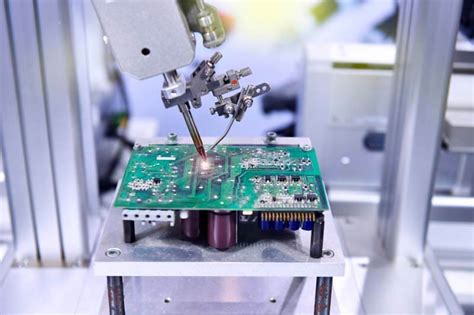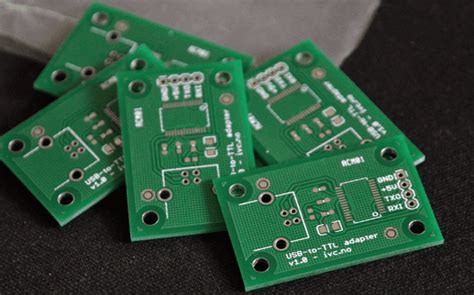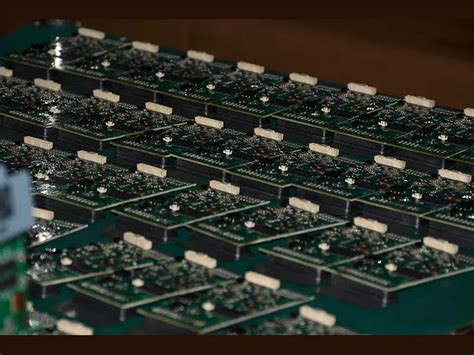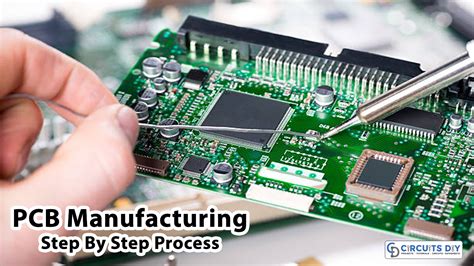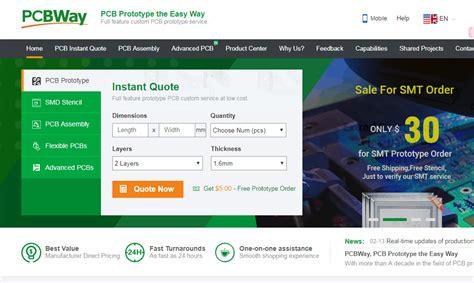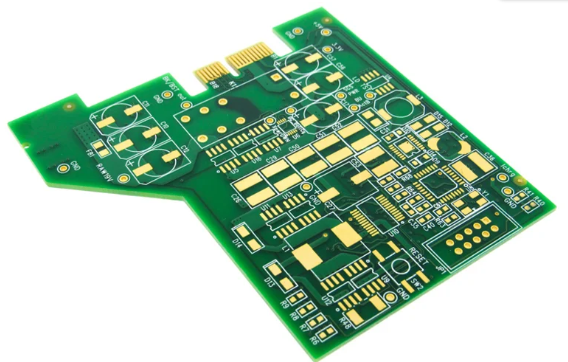Streamlining Electronics Production Through Professional PCB Contract Manufacturing
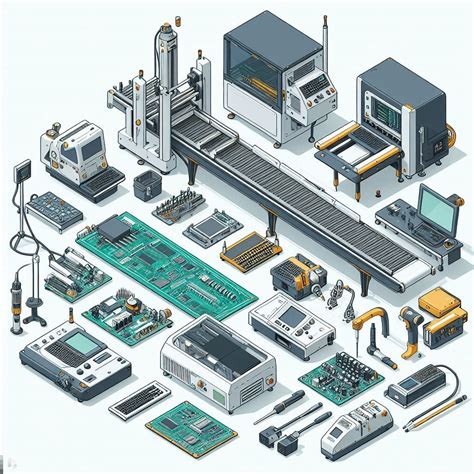
Key Takeaways
When exploring PCB manufacturing solutions, understanding core advantages helps align expectations with operational realities Partnering with established PCB manufacturing companies allows you to tap into advanced technologies like automated optical inspection (AOI) and surface-mount technology (SMT), which are critical for maintaining precision at scale Proactive collaboration with your contract manufacturer during the design phase can mitigate costly revisions later, directly impacting PCB manufacturing cost efficiency
Tip: Always request a Design for Manufacturability (DFM) review early in the process—this step identifies potential production bottlenecks before prototyping begins
A key benefit of outsourcing to a PCB manufacturing business is access to vertically integrated workflows From material procurement to final assembly, specialized partners streamline processes that would otherwise require multiple vendors This consolidation reduces lead times by up to 40%, according to industry benchmarks, while ensuring consistent quality through standardized protocols
Cost optimization extends beyond unit pricing For instance, batch production scheduling and inventory management tools offered by contract manufacturers minimize waste and storage expenses Additionally, economies of scale achieved through high-volume orders lower per-unit PCB manufacturing cost, freeing capital for R&D or market expansion
Quality assurance frameworks—such as ISO 9001 and IPC-A-610 compliance—are non-negotiable Reputable PCB manufacturing companies embed testing at every stage, from bare-board electrical testing to functional checks post-assembly This multi-layered approach ensures defect rates remain below 01%, even for complex multilayer designs
Finally, scalability hinges on flexible partnerships Whether ramping up for seasonal demand or adapting to component shortages, a responsive manufacturer adjusts workflows without compromising turnaround times By leveraging their PCB manufacturing expertise, you gain agility to pivot production strategies as market conditions evolve

Maximizing Efficiency in PCB Contract Manufacturing
When optimizing PCB manufacturing workflows, efficiency hinges on aligning design intent with production capabilities By partnering with established PCB manufacturing companies, you gain access to advanced automation tools that minimize manual intervention For instance, automated optical inspection (AOI) systems can reduce assembly errors by up to 90%, while smart inventory tracking ensures material waste stays below 5% These technologies directly address PCB manufacturing cost concerns, as streamlined processes lower per-unit expenses without compromising quality
A critical step involves standardizing design-for-manufacturability (DFM) guidelines Consistent DFM checks prevent rework delays by flagging potential issues like improper trace spacing or component placement early Consider the following comparison of in-house versus contract manufacturing efficiencies:
| Metric | In-House Production | Contract Manufacturing |
|---|---|---|
| Lead Time Reduction | 15–20% | 30–40% |
| Defect Rate Improvement | 10–15% | 25–35% |
| Cost per Unit Savings | $050–$120 | $180–$350 |
Leveraging a PCB manufacturing business with vertically integrated services—such as prototyping, bulk production, and testing—eliminates logistical bottlenecks For example, consolidating fabrication and assembly under one roof reduces shipping delays by 2–3 weeks Additionally, real-time production dashboards offered by partners like Andwin PCBA provide visibility into cycle times, enabling proactive adjustments to meet shifting demand
To further enhance efficiency, prioritize suppliers with scalable capacity Modular production lines allow rapid scaling from 1,000 to 100,000 units without significant downtime, ensuring your PCB manufacturing cost structure remains adaptive This flexibility is particularly valuable for industries like IoT or automotive, where component shortages or design changes can disrupt timelines
By integrating these strategies, you transform PCB manufacturing from a cost center into a competitive advantage, achieving faster time-to-market and higher margins The next section explores how expert-led workflows amplify these benefits through specialized technical oversight
Cutting Costs With PCB Contract Solutions
When scaling electronics production, managing pcb manufacturing cost becomes a critical factor in maintaining profitability By partnering with specialized pcb manufacturing companies, you gain access to economies of scale that would be challenging to achieve in-house These firms optimize material procurement, minimize waste through advanced panelization techniques, and maintain strategic inventory buffers to prevent component shortages—all while adhering to strict quality protocols
One of the most significant advantages lies in eliminating upfront capital expenditures Establishing your own pcb manufacturing business requires substantial investments in equipment, certifications, and skilled labor By contrast, contract manufacturers spread these fixed costs across multiple clients, allowing you to redirect resources toward R&D or market expansion Advanced manufacturers further reduce expenses through automated assembly lines, which lower labor dependencies and improve precision in high-volume runs
Cost optimization extends beyond production Leading pcb manufacturing partners employ design-for-manufacturability (DFM) analysis to identify potential inefficiencies early in the development cycle This collaborative approach prevents costly redesigns and accelerates time-to-market Additionally, their established supplier networks often secure better pricing for components, translating to per-unit savings that compound across production batches
Flexibility in order volumes also plays a pivotal role Whether you require small-batch prototyping or mass production, contract solutions allow you to scale operations without overcommitting to inventory This demand-responsive model ensures you pay only for what you need, avoiding the financial strain of idle capacity or obsolete stockpiles
By integrating with pcb manufacturing experts, you transform fixed operational costs into variable expenses, creating a financial structure that adapts to market fluctuations This strategic shift not only preserves capital but also enhances your ability to compete in price-sensitive markets—all while maintaining the technical rigor required for complex electronics

Expert-Led PCB Assembly Workflows
When you partner with PCB manufacturing companies that prioritize expertise, you gain access to refined workflows that eliminate inefficiencies inherent in generic production models Unlike in-house teams constrained by limited resources, specialized providers deploy engineers who preemptively identify design flaws, material mismatches, and thermal management issues during prototyping This proactive approach reduces PCB manufacturing cost by minimizing rework and accelerating time-to-market—critical factors in competitive electronics sectors
A hallmark of expert-led processes is the integration of design for manufacturability (DFM) principles By analyzing your board layouts through the lens of scalable production, engineers optimize component placement, layer stack-ups, and solder mask applications This ensures compatibility with automated assembly lines, where even minor design adjustments can yield 15–20% savings in material waste For businesses navigating complex PCB manufacturing business challenges, such precision translates to predictable budgeting and enhanced profit margins
Moreover, seasoned providers employ traceability systems that track every stage of assembly, from bare-board fabrication to final testing Real-time data analytics enable dynamic adjustments—like substituting components during shortages without compromising performance—ensuring supply chain resilience When you align with partners versed in high-mix, low-volume (HMLV) strategies, you maintain flexibility to scale production up or down while preserving PCB manufacturing quality standards
The convergence of advanced tooling and human expertise also addresses niche requirements, such as impedance control for high-frequency boards or conformal coating for harsh environments By leveraging these tailored workflows, you transform rigid production timelines into adaptive processes that respond to market shifts without sacrificing reliability—a decisive advantage in industries where technical precision dictates commercial success
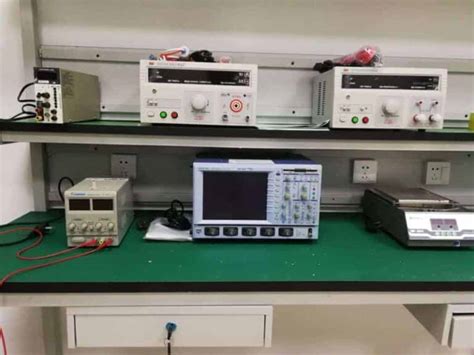
Quality Assurance in Electronics Contract Production
When partnering with PCB manufacturing companies, ensuring consistent quality isn’t just a checkbox—it’s the backbone of reliable electronics production Defect prevention begins long before assembly, with rigorous material inspections and automated optical checks to validate circuit integrity Modern PCB manufacturing workflows integrate multi-stage testing protocols, from in-circuit validation to functional stress tests, ensuring every board meets or exceeds industry benchmarks like IPC-A-610 standards
A key advantage of outsourcing to specialized PCB manufacturing business partners is access to advanced quality management systems (QMS) These systems track defects in real time, enabling root-cause analysis that minimizes rework and delays For example, automated X-ray inspection (AXI) tools scrutinize solder joints in high-density designs—critical for avoiding costly recalls in sectors like medical devices or aerospace
Balancing PCB manufacturing cost with quality requires strategic alignment Reputable providers optimize testing phases to avoid over-engineering while maintaining compliance Continuous improvement programs, such as Six Sigma methodologies, further refine processes, reducing variability across batches This becomes especially critical when scaling production, where even minor inconsistencies can compound into significant waste
You’ll also want to verify certifications like ISO 9001 or IATF 16949, which signal a manufacturer’s commitment to standardized quality practices These frameworks ensure traceability, from component sourcing to final delivery, safeguarding against counterfeit parts or supply chain disruptions
Ultimately, robust QA in PCB manufacturing isn’t just about catching flaws—it’s about building partnerships that prioritize long-term reliability By embedding quality checks at every design iteration and production stage, you mitigate risks while accelerating time-to-market for mission-critical electronics
Streamlining Design-to-Production Processes
When navigating the complexities of bringing an electronic product to market, the transition from design to physical production often presents unexpected hurdles This is where partnering with PCB manufacturing companies becomes a strategic advantage By integrating advanced design-for-manufacturability (DFM) analysis early in the development cycle, these experts identify potential flaws in board layouts, material choices, or component placements before prototyping begins Such proactive collaboration reduces costly redesigns and accelerates time-to-market—a critical factor when balancing innovation with pcb manufacturing cost constraints
Modern pcb manufacturing workflows leverage automated quoting systems that synchronize your design files with real-time material pricing and production capacity data This transparency allows you to make informed decisions about layer counts, finishes, and tolerances while maintaining alignment with budgetary goals For instance, opting for a standard FR-4 substrate instead of specialized materials might trim expenses by 15–20% without compromising performance—a calculation seasoned pcb manufacturing business partners can model instantly
The true value of streamlined processes emerges in how supply chain integration eliminates bottlenecks Leading manufacturers maintain relationships with certified component suppliers, ensuring parts specified in your Bill of Materials (BOM) are available and cost-optimized This is particularly crucial during global chip shortages or logistics disruptions, where dual-sourcing strategies and vendor-managed inventory systems prevent stalled production lines
Moreover, digital twin simulations now allow virtual testing of assembled PCBs under thermal, mechanical, and electrical stress By catching failure points in the digital realm, you avoid the pcb manufacturing cost penalties of physical trial runs This synergy between design software and manufacturing execution systems creates a closed-loop feedback mechanism, where lessons from previous builds continuously refine future projects
Ultimately, the goal is to create a frictionless pipeline where your engineering team’s creativity meets the precision of industrialized production—without sacrificing quality or agility By aligning with partners who prioritize cross-functional collaboration, you transform the design-to-production journey from a series of reactive fixes into a predictable, scalable engine for growth
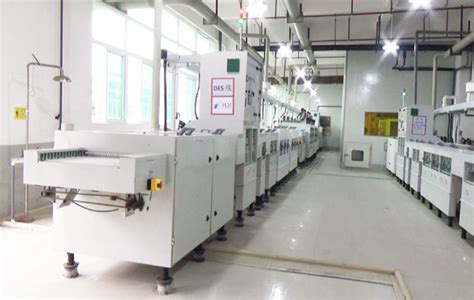
Flexible Manufacturing for Scalable Electronics
When scaling your electronics production, adaptability becomes critical PCB manufacturing companies excel at providing elastic production frameworks that align with fluctuating demand, enabling you to ramp up or dial back output without compromising timelines By outsourcing to partners with modular facilities, you avoid the upfront costs of expanding in-house capacity—a strategic move that directly addresses PCB manufacturing cost challenges These vendors leverage automated assembly lines and multi-stage testing protocols to maintain consistency, whether you’re producing 100 prototypes or 10,000 finished units
A key advantage lies in mixed-volume compatibility Unlike rigid traditional setups, professional PCB manufacturing services integrate agile workflows that accommodate design iterations, material substitutions, or last-minute order adjustments For instance, if your PCB manufacturing business requires rapid prototyping for a new IoT device, contract partners can prioritize small-batch runs while maintaining readiness for full-scale production This dual capability eliminates bottlenecks often seen when transitioning from development to commercialization
Moreover, flexible manufacturing strengthens supply chain resilience Established PCB manufacturing companies maintain pre-vetted component networks, reducing lead times for critical parts By tapping into their bulk purchasing power, you gain access to cost-optimized raw materials without long-term inventory commitments This approach not only streamlines operations but also insulates your business from market volatility—a crucial factor when managing PCB manufacturing cost variables like copper pricing or semiconductor shortages
The scalability extends to technological adaptability As your product line evolves, contract manufacturers update equipment and processes in parallel, ensuring compatibility with advanced requirements like HDI boards or high-frequency substrates This future-ready infrastructure lets you focus on innovation rather than retrofitting production systems—a competitive edge in fast-moving electronics markets By aligning with partners who specialize in PCB manufacturing, you transform fixed operational costs into variable, demand-driven investments, unlocking sustainable growth at every scale
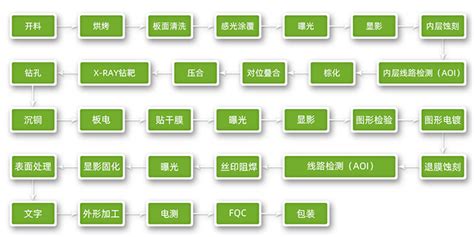
Optimizing Supply Chains Through Contract Manufacturing
When scaling electronics production, managing supply chain complexity becomes a critical challenge By consolidating your pcb manufacturing needs with specialized partners, you gain access to vertically integrated networks that eliminate bottlenecks in material sourcing, component procurement, and logistics Leading pcb manufacturing companies leverage pre-vetted supplier relationships and bulk purchasing power, directly addressing fluctuations in raw material availability and pricing—a key factor in controlling pcb manufacturing cost
This model shifts inventory management burdens to your contract partner, reducing capital tied up in warehousing while ensuring just-in-time delivery for assembly lines For example, a pcb manufacturing business focused on automotive electronics might integrate real-time demand forecasting tools with their contract manufacturer’s ERP systems, synchronizing production schedules with evolving order volumes Such coordination minimizes overproduction risks and accelerates time-to-market for new product iterations
Transitioning to contract manufacturing also simplifies compliance tracking across global supply chains Partners with ISO-certified workflows automate documentation for RoHS, REACH, and conflict mineral regulations—tasks that often strain internal teams You maintain visibility through digital dashboards while avoiding the overhead of auditing multiple suppliers
Critically, this approach future-proofs your operations As component miniaturization and IoT integration reshape pcb manufacturing requirements, specialized contractors invest in advanced equipment like laser-drilled microvias or automated optical inspection (AOI) systems—technologies too costly for most in-house facilities By aligning with partners who continuously upgrade capabilities, you ensure scalability without diverting R&D resources from core innovation
The result? A leaner, more responsive supply chain that adapts to market shifts while preserving margins—a strategic advantage in industries where agility defines competitiveness
Leveraging Specialized Expertise in PCB Assembly
When you partner with experienced PCB manufacturing companies, you gain access to a depth of technical knowledge that transforms how complex assemblies are executed These firms bring decades of refined processes to the table, combining advanced equipment with engineering insights to address challenges like high-density interconnects or mixed-technology boards By collaborating with specialists, you bypass the steep learning curve of in-house production, ensuring your designs align with manufacturability standards from the outset
One critical advantage lies in optimizing PCB manufacturing cost without compromising quality Expert providers analyze your project’s requirements—material selection, layer counts, and testing protocols—to eliminate redundancies For instance, their familiarity with panelization techniques can reduce material waste, while automated inspection systems minimize rework expenses This precision is especially valuable for low-to-mid-volume runs, where inefficiencies disproportionately impact budgets
The PCB manufacturing business thrives on adaptability, and specialized partners excel at scaling operations to match demand fluctuations Whether you’re prototyping a niche IoT device or ramping up for a consumer electronics launch, their infrastructure adjusts seamlessly You retain control over timelines and specifications while outsourcing logistical complexities like component sourcing or compliance certifications
Moreover, these experts enhance quality assurance through rigorous testing frameworks From thermal stress simulations to signal integrity checks, their protocols identify potential failures early, safeguarding your product’s reliability This proactive approach reduces time-to-market risks, letting you focus on innovation rather than troubleshooting
In essence, leveraging specialized PCB manufacturing capabilities isn’t just about outsourcing—it’s about integrating a strategic extension of your team The result? A streamlined path from concept to functional assembly, backed by economies of scale and cutting-edge technical proficiency
Conclusion
When considering how to bring your electronic products to market efficiently, partnering with specialized PCB manufacturing companies offers a strategic advantage By outsourcing to experts in PCB manufacturing, you effectively convert fixed operational costs into variable expenses, creating financial flexibility that’s critical in dynamic markets This approach not only optimizes your pcb manufacturing cost but also eliminates the need for large upfront investments in equipment or facility upgrades, allowing you to allocate resources to innovation and market expansion
The true value of a pcb manufacturing business lies in its ability to balance precision with scalability Advanced manufacturers employ automated assembly lines and rigorous testing protocols, ensuring consistent quality while accommodating fluctuations in demand This duality is particularly valuable when navigating supply chain uncertainties or scaling production for new product launches You gain access to cutting-edge technologies like multilayer PCB fabrication and surface-mount device (SMD) assembly without bearing the risks of technological obsolescence
For businesses prioritizing lean operations, the collaboration model inherent in PCB contract manufacturing transforms complex design-to-production workflows into seamless processes By leveraging your partner’s expertise in design for manufacturability (DFM) and material sourcing networks, you sidestep common pitfalls that delay time-to-market Moreover, the cost predictability offered by established pcb manufacturing companies helps avoid budget overruns caused by prototyping iterations or component shortages
As you evaluate potential partners, prioritize those demonstrating transparency in pcb manufacturing cost structures and proven adaptability across industries The right collaborator becomes an extension of your team, aligning their technical capabilities with your business objectives to create a competitive edge In an era where electronics innovation accelerates exponentially, this partnership model ensures you remain agile without compromising on quality or operational efficiency
Frequently Asked Questions
How does partnering with PCB manufacturing companies improve production timelines?
By leveraging established infrastructure and technical expertise, these partners eliminate bottlenecks in prototyping and mass production Their standardized workflows often reduce lead times by 30-50% compared to in-house operations
What factors most influence PCB manufacturing cost?
Material selection (FR-4 vs high-frequency substrates), layer count, and order volume typically account for 70-85% of expenses Professional contractors optimize these variables through bulk purchasing and design-for-manufacturing (DFM) analysis
Can a PCB manufacturing business accommodate custom design requirements?
Top-tier providers offer configurable solutions ranging from HDI layouts to flex-rigid boards, ensuring compatibility with your product’s technical specifications Most maintain NDA-protected development channels for proprietary designs
How do contract manufacturers ensure quality in PCB manufacturing?
They implement multi-stage inspection protocols combining automated optical inspection (AOI) and X-ray verification Many hold ISO 9001 and IPC-A-610 certifications, with traceability systems tracking each batch through the entire production cycle
What scalability advantages exist in outsourced PCB manufacturing?
Contract partners provide elastic production capacity, allowing seamless shifts between prototype validation (100 units) and full-scale runs (10,000+ boards) This eliminates capital investments in underutilized equipment during demand fluctuations
Explore Tailored PCB Manufacturing Solutions
Ready to transform your electronics production workflow? Click here to discover how our PCB manufacturing services align with your project requirements
How does geographic location impact PCB manufacturing companies‘ service efficiency?
While Asia-based providers dominate high-volume production, regional suppliers in North America/Europe offer faster turnaround for urgent revisions Smart partnerships often combine both models—using offshore facilities for cost-sensitive batches and local hubs for rapid engineering support
What certifications should I verify when selecting a PCB manufacturing business?
Prioritize UL listing, RoHS compliance, and ITAR registration for defense projects For medical or automotive applications, confirm IATF 16949 and ISO 13485 certifications to meet industry-specific reliability standards
Are there hidden costs in PCB manufacturing cost estimates?
Reputable contractors provide transparent breakdowns covering tooling fees, testing surcharges, and logistics Watch for unstated expenses like ECO implementation charges or minimum order quantity (MOQ) penalties in less detailed proposals


